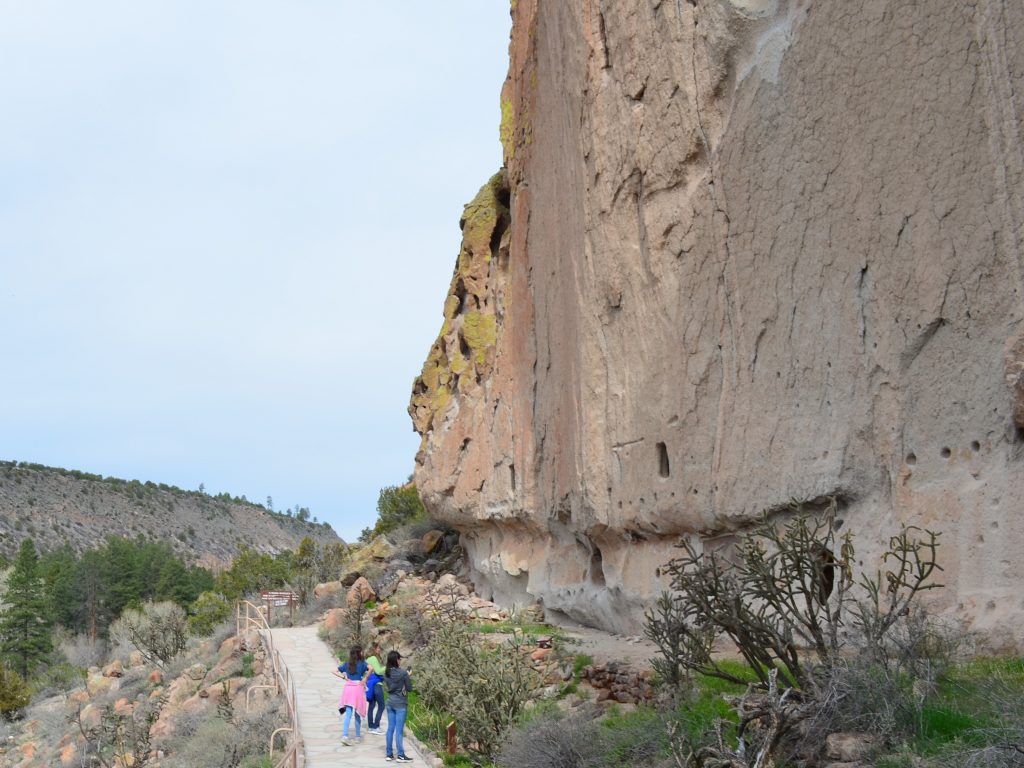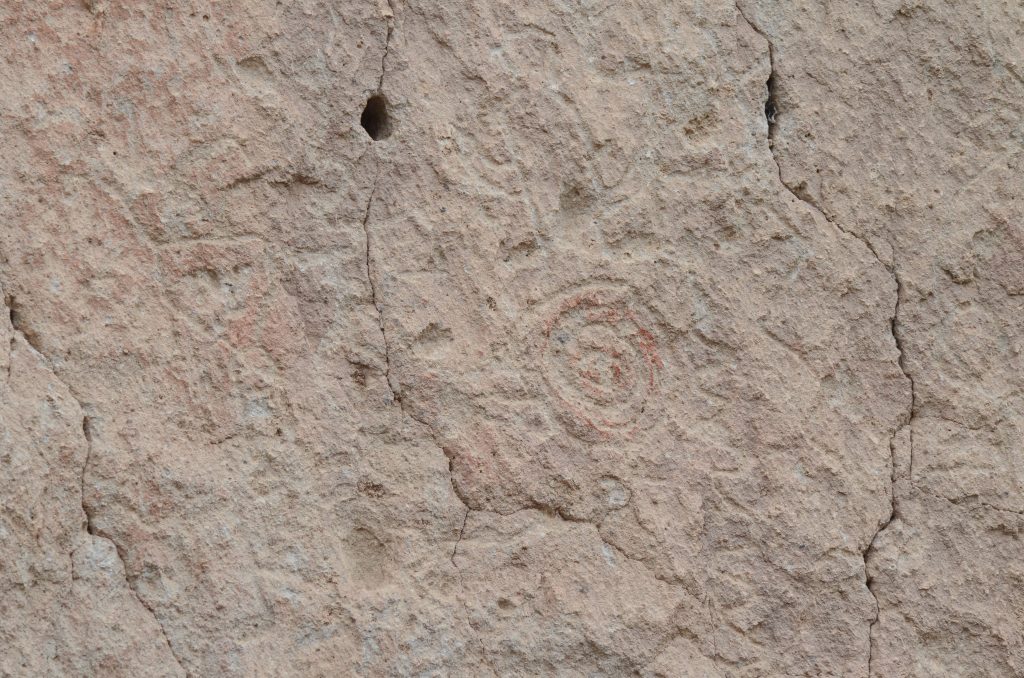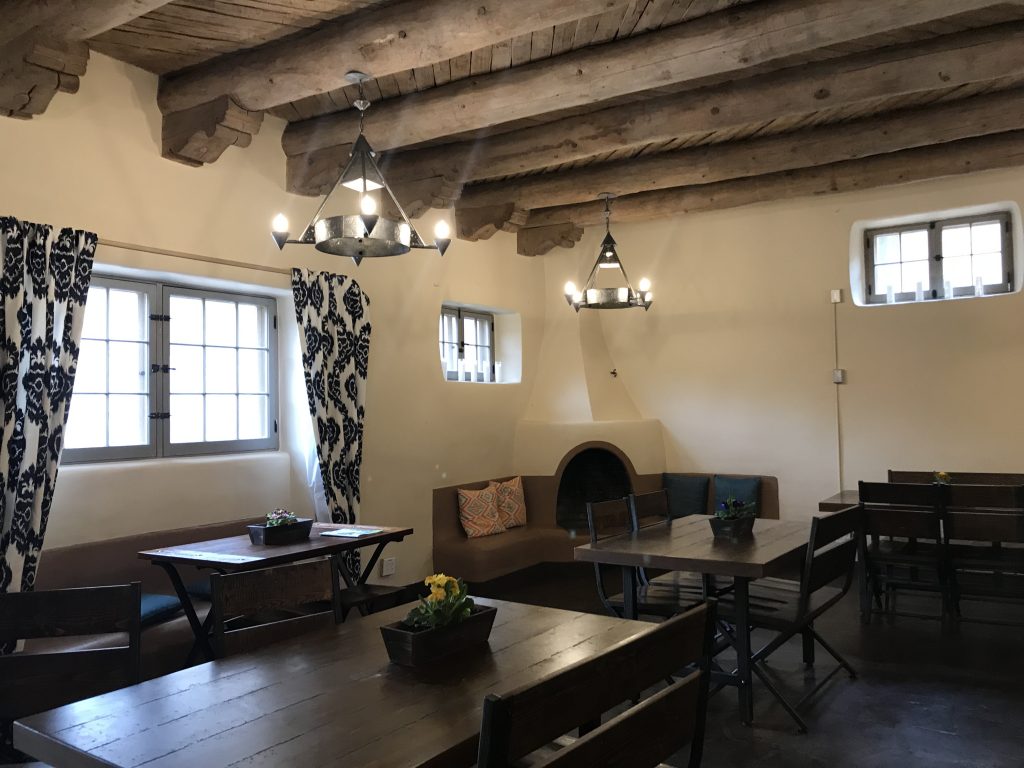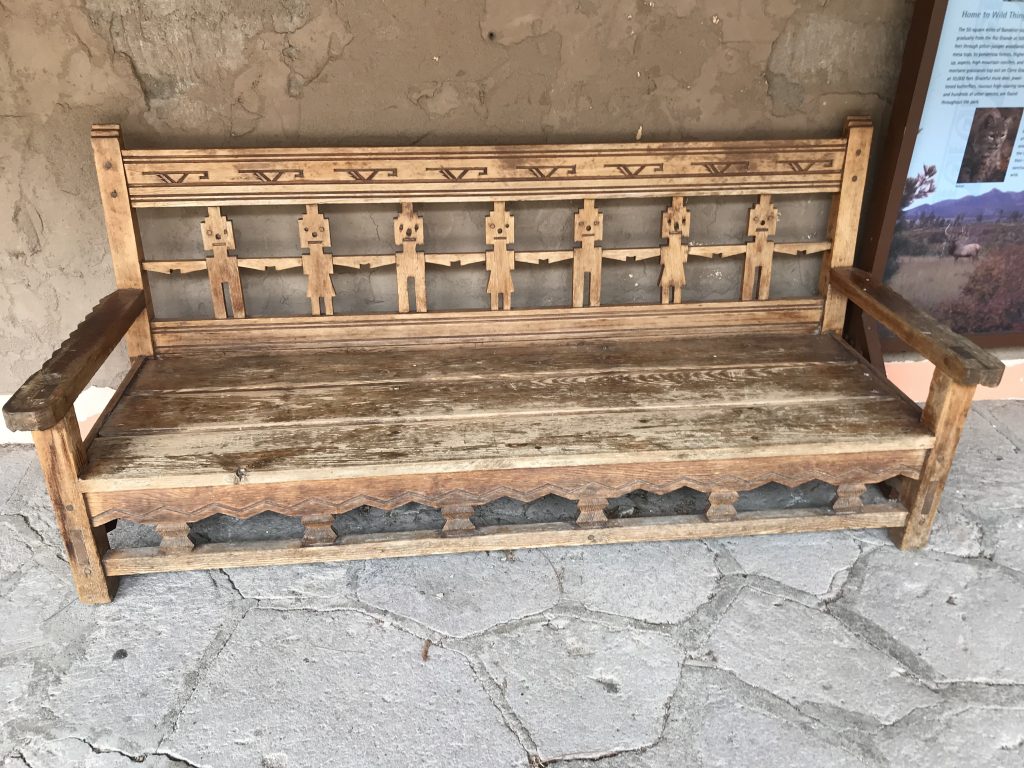Although I enjoyed the Grand Canyon and Painted Desert, Bandelier National Monument topped my list of favorites on this vacation. Maybe it’s because I had no built-up expectations, but I highly recommend this half-day side trip that’s only 40 miles from Santa Fe.
Located in the Pajarito Plateau, Bandelier features ancient dwellings of the Anasazi (now called Pueblo) people who lived in the area from 1150-1550. Interestingly enough, the the pink canyon rocks are actually volcanic ash called “tuff” resulting from the volcanic eruptions in the nearby Jemez Mountains. Years of erosion caused small openings that were later enlarged to make homes.
Main Loop Trail
Featuring 33,000 acres and 70 miles of trails, we didn’t know where to begin. At the visitor center, however, the ranger told us that the popular 1.2-mile Main Loop trail is the best way to get an overview of the area. We purchased the trail guide that provided details for 21 stops. We found this invaluable as there weren’t many placards describing the various sites.
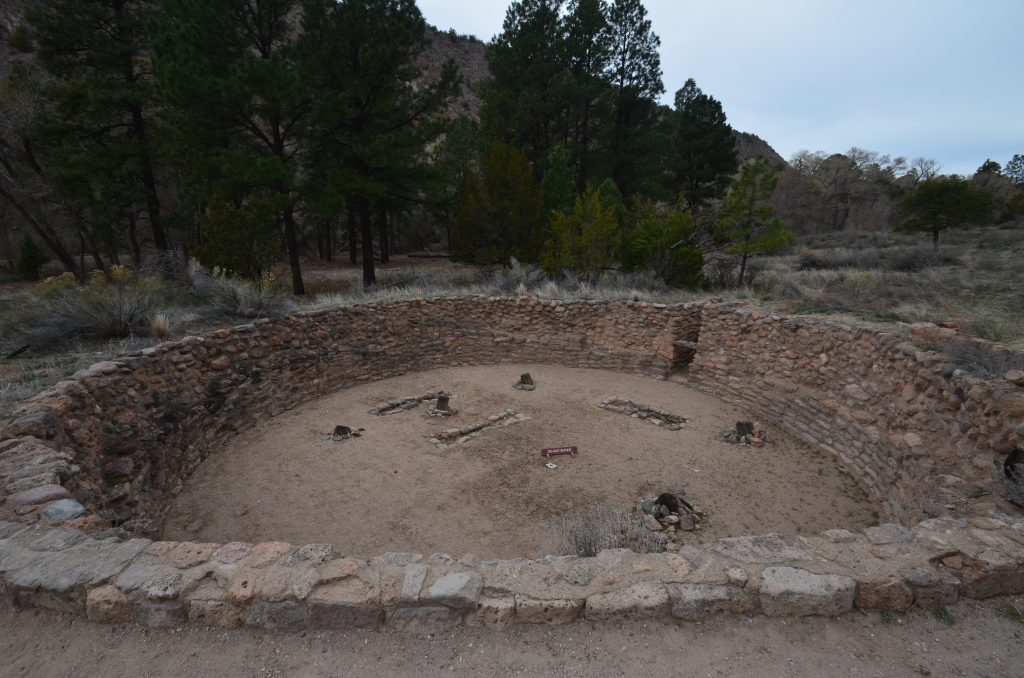
One of our first stops was a large circular pit with stone walls called a kiva. Originally covered and accessed by a ladder, kivas were central to native communities, hosting tribal meetings, religious events and education to the younger generations.

Many different Pueblo natives lived in the area. One such area was at Tyuonyi, which housed over 100 people in 400 small rooms. Archaeologists think this structure reached two stories high and the ground floor rooms served primarily as food storage. Three small kivas sit inside the stone walls.
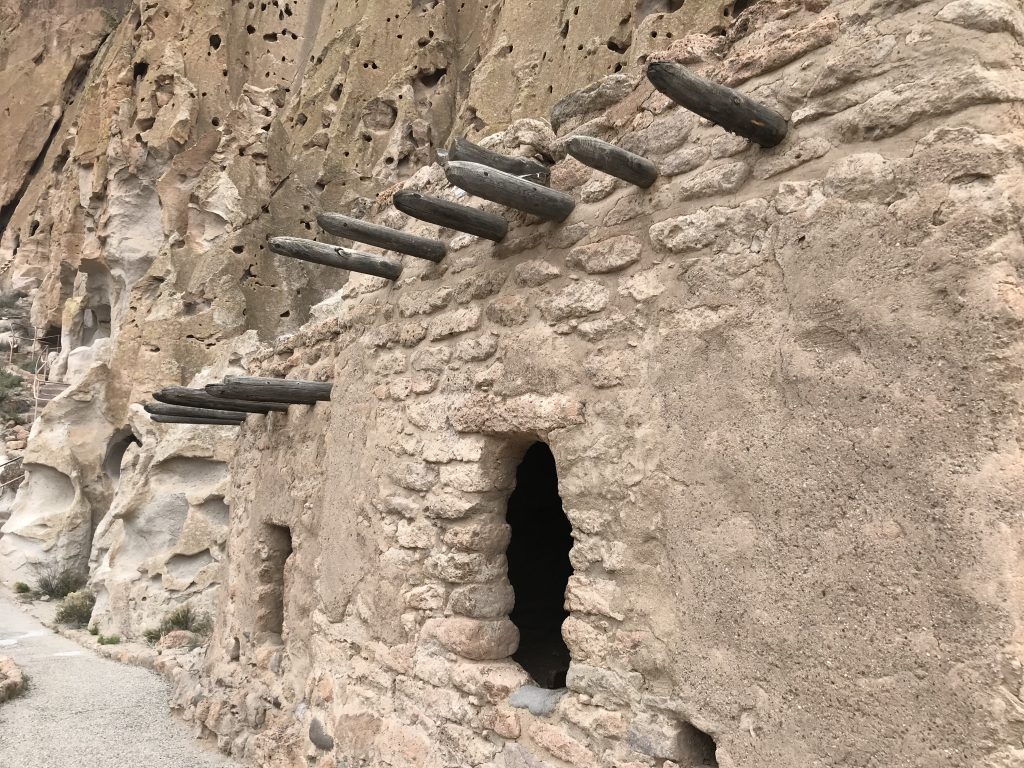
Soon we came to cavates, or cave rooms, built into the sides of the cliffs. The natives placed stone walls in front of the dwellings and plastered the tuff walls to prevent crumbling. Reconstructed in 1920, Talus House shows how these dwellings may have looked centuries earlier.
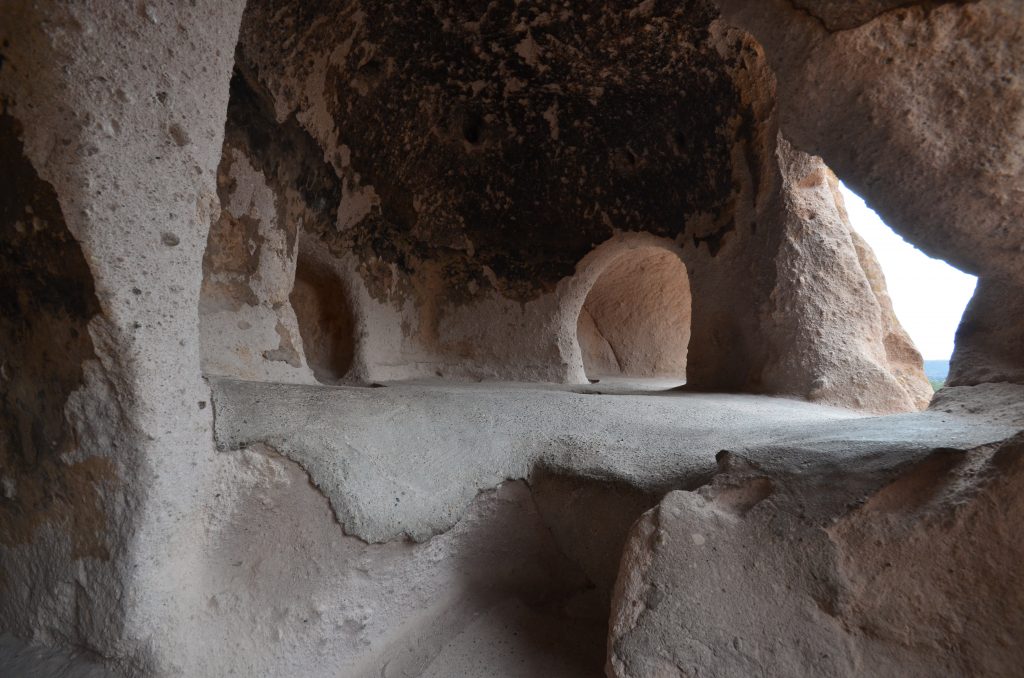
Along the way, we could climb ladders to enter some of these cavates. Since the average height for a male was only 5’6”, the rooms are not very tall.
We also passed by Long House. This 700 foot section of the cliff showed multiple holes called vigas where the Ancestral Pueblo placed wooden beams delineating different levels. Experts believe the lodgings contained at least four stories and 217 rooms. On the walls just above some of the vigas, we could barely make out faded petroglyphs.

Long House 
A circular petroglyph near a viga
The park service offers an excellent computer animation of how Long House would have looked when it hosted so many families. To view it, click here.
Alcove House Trail
Although only halfway done with the Main Loop Trail, we took a detour on the 1-mile Alcove House Trail to see more ancient dwellings.

The trail crossed the Frijoles Creek several times. With the rushing water, the large trees, and relatively flat path, this seemed more like a nature trail. Soon we came to a series of four wooden ladders going up to Alcove House. A sign warns visitors that the climb is 140 feet to the top.
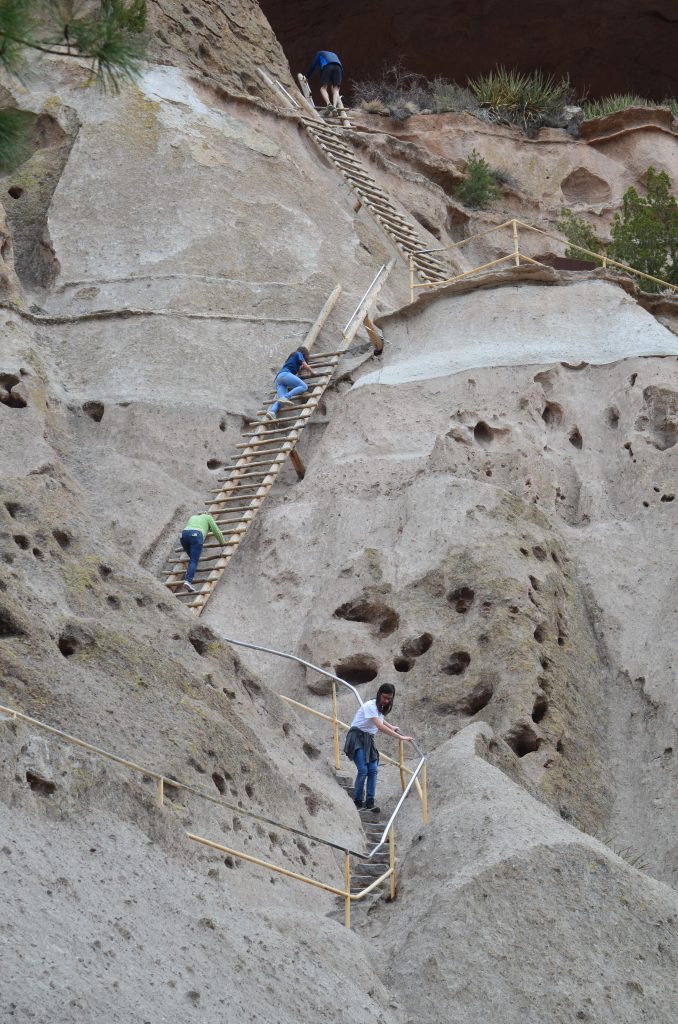
Although the first two ladders were relatively easy, you had to walk on a narrow trail to get to the third and fourth ladders. The third one was definitely the longest and most daunting but I couldn’t give up.
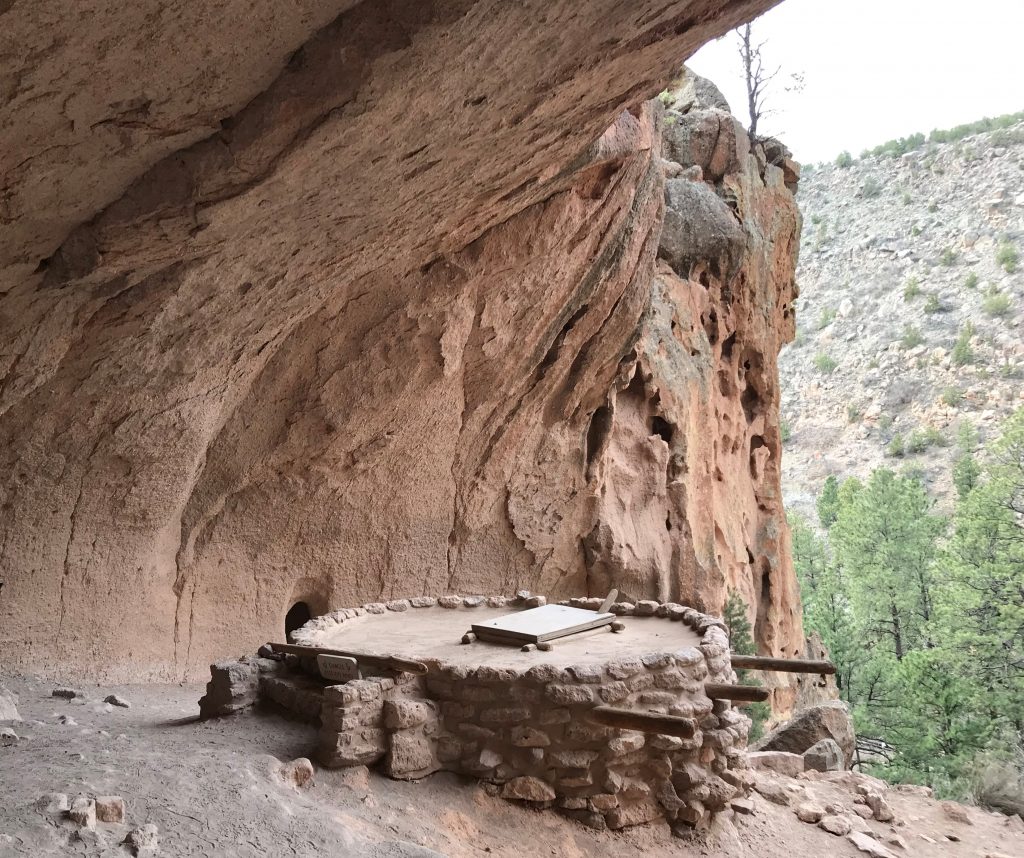
Reaching the top, we entered an open cave area. In the far corner, a kiva resided, complete with roof covering. Looking at the view, I noticed we were higher than most of the trees.
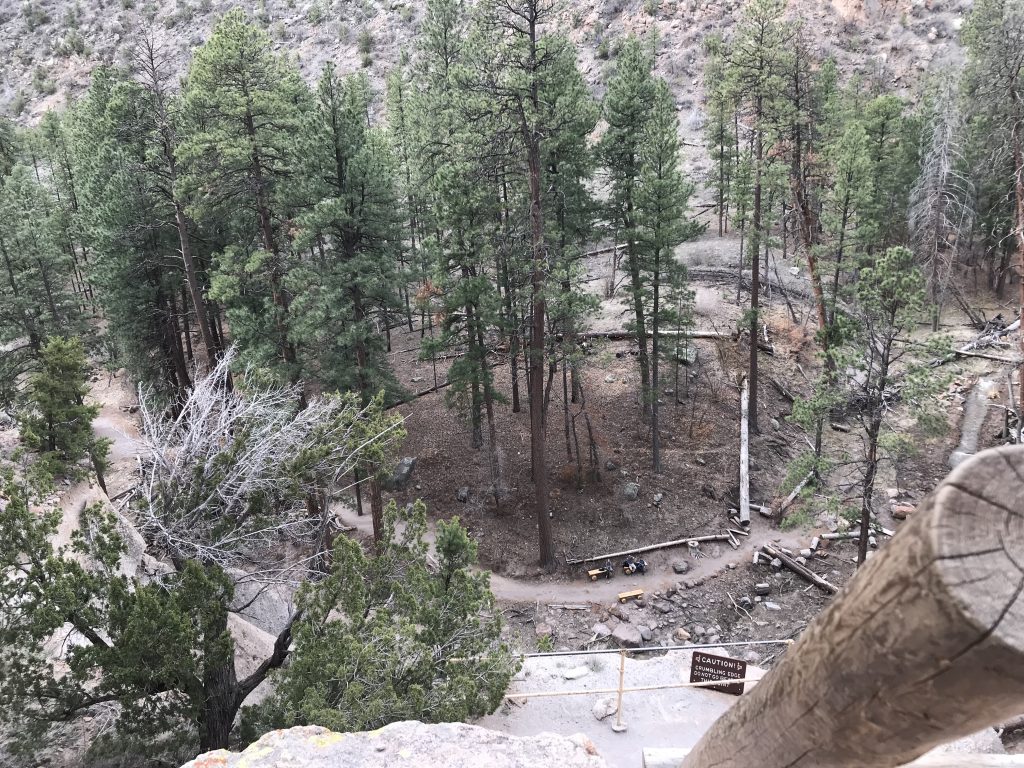
Back on the path, we rejoined the Main Loop trail and headed back to the visitor center. Across the creek from Tyuonyi, we passed a sign marking the location of the original lodge called Ranch of the Ten Elders. While nothing remains, we learned that a young couple, Mr. and Mrs. George Frey, became concessionaires of the lodge in 1925. Because the only route to the canyon floor was via a steep dirt trail (now called the Frey Trail), they relied heavily on livestock and crops to provide meals for the guests. Visitors trecked down the trail on foot or horseback while mules carried their luggage. Despite difficulties, over 3200 people visited Bandelier in 1929.
Bandelier CCC Historic District
At the visitor center, we learned more about the park’s history with the Civilian Conservation Corps (CCC). Although named a National Monument in 1916, Herbert Hoover transferred Bandelier to the National Park Service’s jurisdiction in 1932. Just one year later, FDR created the Civilian Conservation Corps (CCC) which almost immediately set up camp in the park to build a much-needed road into the canyon.
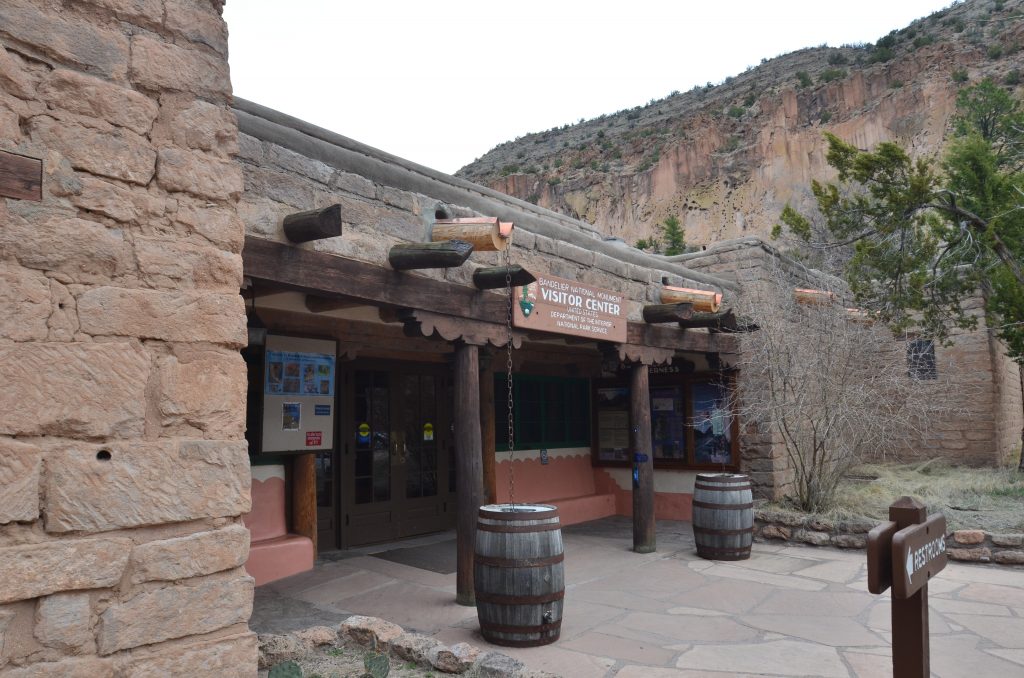
Besides completing the much-needed road, the CCC built 31 Pueblo Revival-style buildings using the tuff rocks in one central area at the end of the road. These include the visitor center, employee housing, stables, a fire tower and the Frijoles Canyon Lodge. Mrs. Frey became the concessionaire of the Frijoles Canyon Lodge, which replaced the earlier lodge.
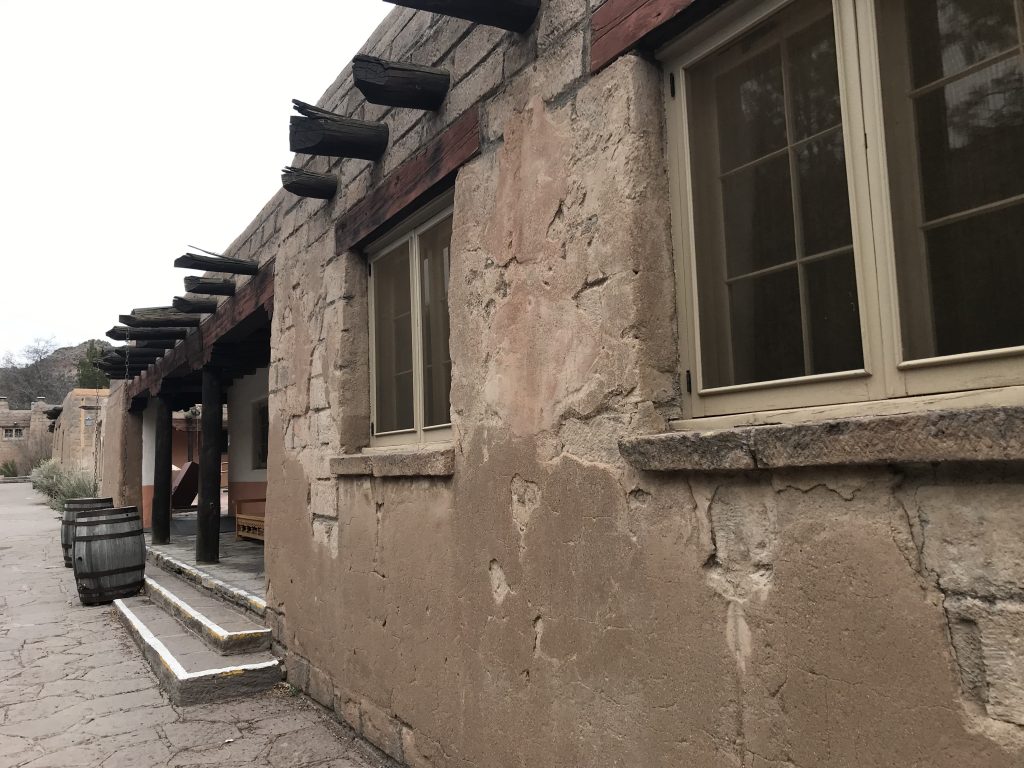
During WWII, the government set up the secret Site Y for the Manhattan Project in nearby Los Alamos. Due to limited housing, many of the top scientists and their families to stay at the lodge in 1943 until homes could be built. In 1944, the lodge housed 108 construction workers working at Los Alamos.
After the war, Mrs. Frey continued to greet travelers with hearty meals and guest cabins. However, by the late 1960s, visitors stayed for shorter periods while the more park administration needed more office space. In 1976, the lodge ceased operations and park administration offices filled the now empty spaces. Mrs. Frey continued to live on the site until she died in 1988 at the age of 96.

Frijoles Canyon Dining Room 
We walked around the area, now designated a National Landmark District, where over 2,000 young men worked from 1933-1941 on improving the property. Today, a gift shop, snack bar and picnic area operate in addition to the visitor center and museum.
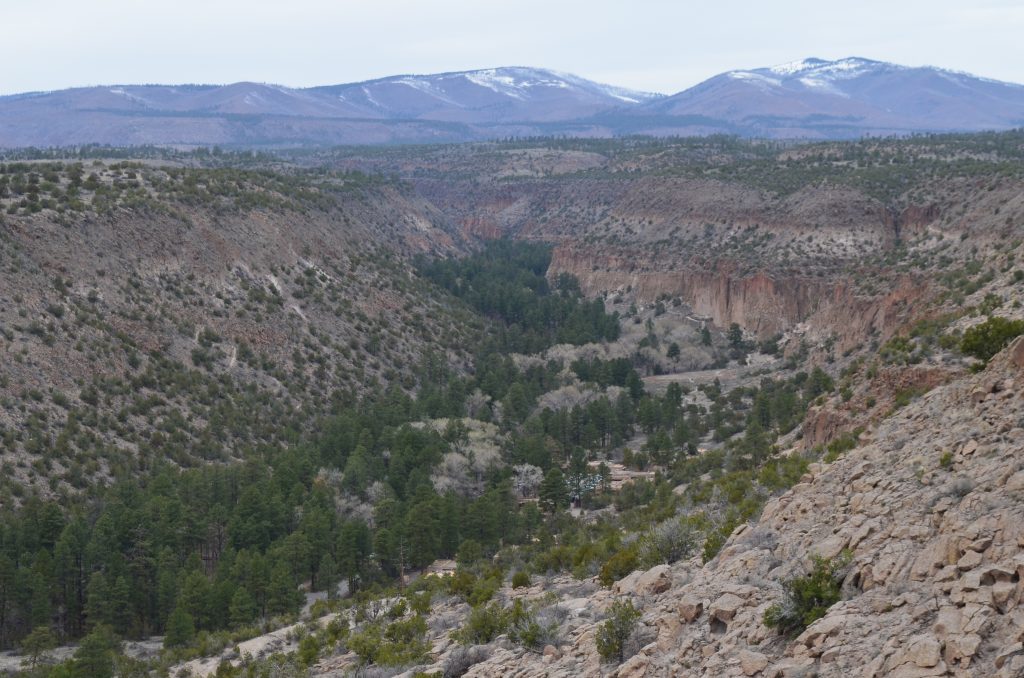
Back in the 1930s, the CCC designed an infrastructure to handle 30,000 annual visitors. Since that number is closer to 300,000 today, visitors must access the park by shuttle bus between 9:00 am – 3:00 pm during the heavier months of May through October.
For more information about Bandelier National Monument, click here.

